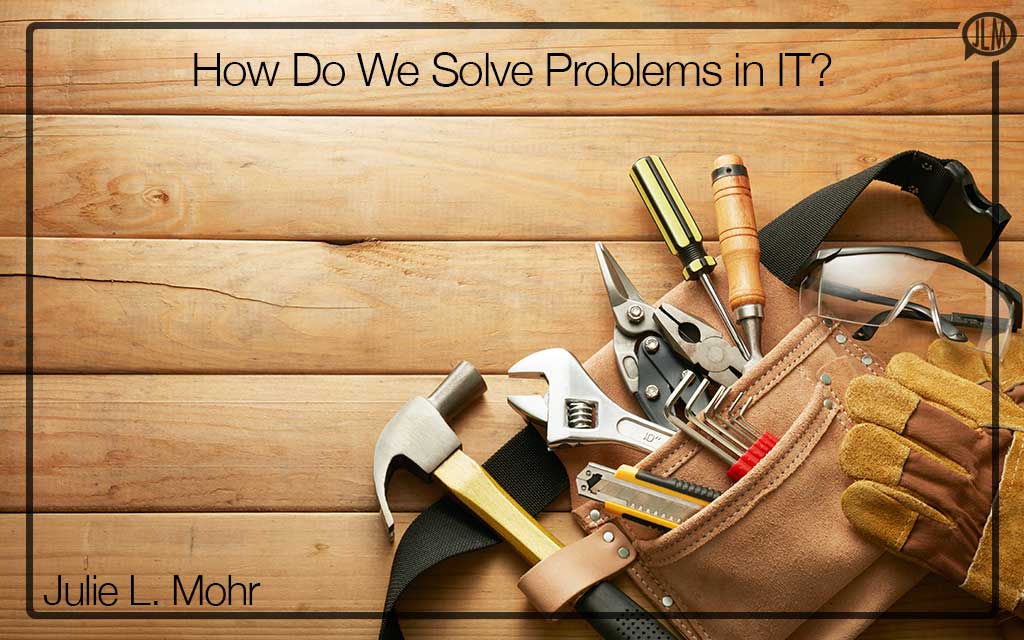![]()
Do you remember the television show Home Improvement? Tim “the toolman” Taylor had to have the most powerful tools and often super-sized his approach to solving household problems. I remember the episode when he supercharged the dishwasher. But his approach to solving problems and improving households represents something important for IT professionals facing problems in IT departments.
Problems in IT
I am not referring to problems such as ITIL problem management, but instead the issues that are facing the IT organization that keep them from performing at their best. Whether it is process inefficiencies, lack of governance, poorly managed projects, inability to manage risk, or organizational change – rarely are the problems that the IT organization encounters easily to solve. We tend to arm ourselves with the most popular tools to solve these complex problems – missing the point of why we have the tools in the first place. One tool rarely solves our complex problems.
What is the Best Tool for the Job?
Often IT professionals ask me, what is the best framework? COBIT, ITIL, KCS, Six Sigma, MoR? My answer is simple; it depends upon the problem. Let’s use the home improvement example to illustrate this point. If I need to hang a picture on a wall and all I have is a screwdriver, can I hang the picture? The answer is yes. I imagine that it is the most inefficient way to complete such a simple task. Of course, a hammer works much better, but if I only have a screwdriver – sure I can hang the picture.
But problems that IT organizations face are rarely that simple that only one tool will do the job. Let’s say that you are going to knock down a wall and build an extension on your home. You are going to need many different tools, a plan, the correct raw materials, and the required skills to accomplish the task. The more familiar you are with the tools and armed with the right tools, the more natural the job.
Need More than One Tool for the Job
When we face a problem in IT, rarely does one tool help us to solve the problem. More likely, we will need multiple tools to change the organization successfully. All well-led organizational change projects take into consideration the best approach to accomplish the objectives. It may require process design using ITIL as a guide, or process efficiency with Six Sigma, and certainly will require project management tools such as PMBOK or Prince2 to manage the project successfully. Communication plans and organizational change elements are also crucial for success.
Another complaint that I hear is, “our organization is using XYZ, but next month it will be something else.” Any organization that invests in its people to provide them with more tools in their tool belt is positively supporting organizational change. However, just having tools in your tool belt doesn’t make you an expert carpenter. I may conceptually understand how to use a jackhammer, but until I try to use one and practice, I won’t learn how to use the tool to solve a problem effectively.

Picture of the first time I used a jackhammer – I’ll need a lot more practice
Experience and Training
When an organization invests in training to help staff to learn about different frameworks and methodologies, leadership is providing the organization with the tools needed to fix problems that the organization faces. But experience helps to fill the gap between a concept and driving organizational change. Experience helps to drive success by choosing the right tools to most effectively solve a problem.
What are your favorite tools to drive organizational change and solve problems?


